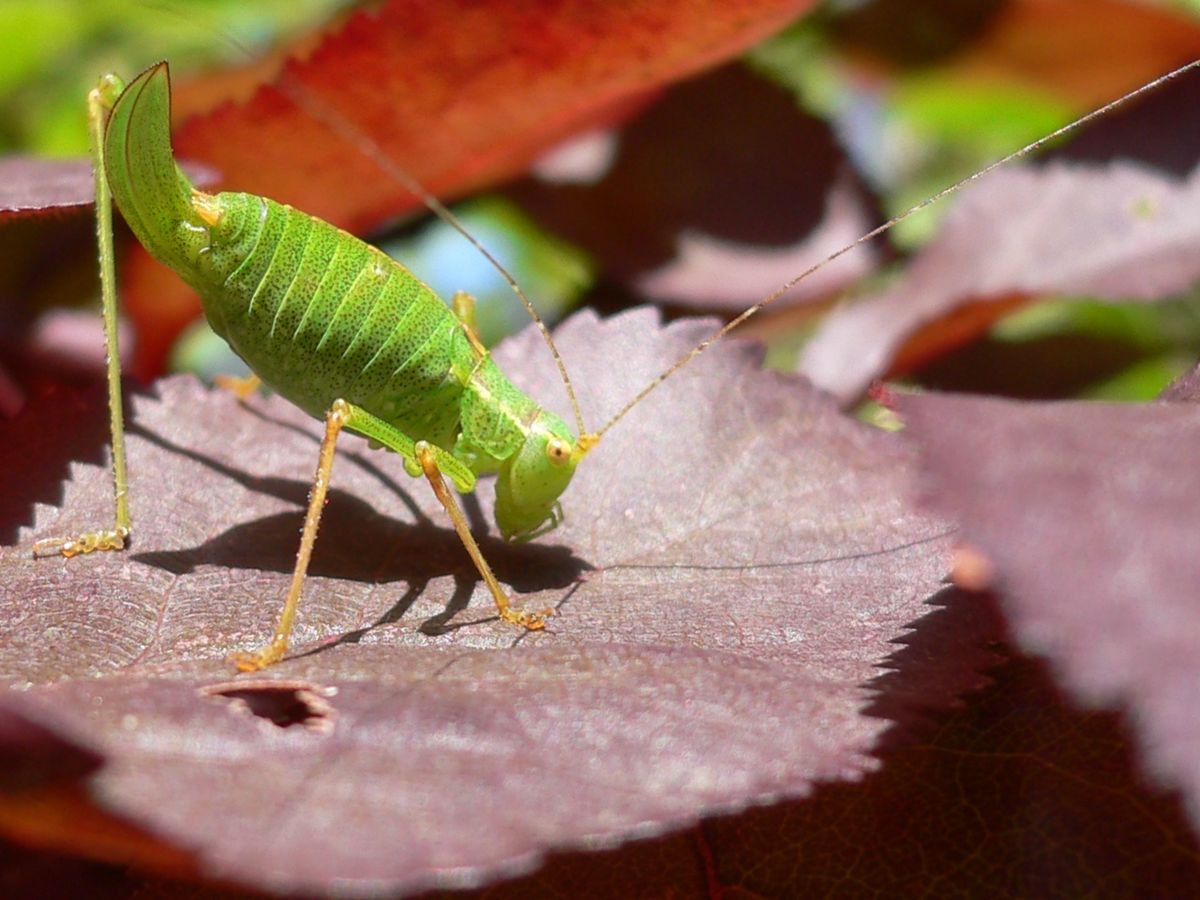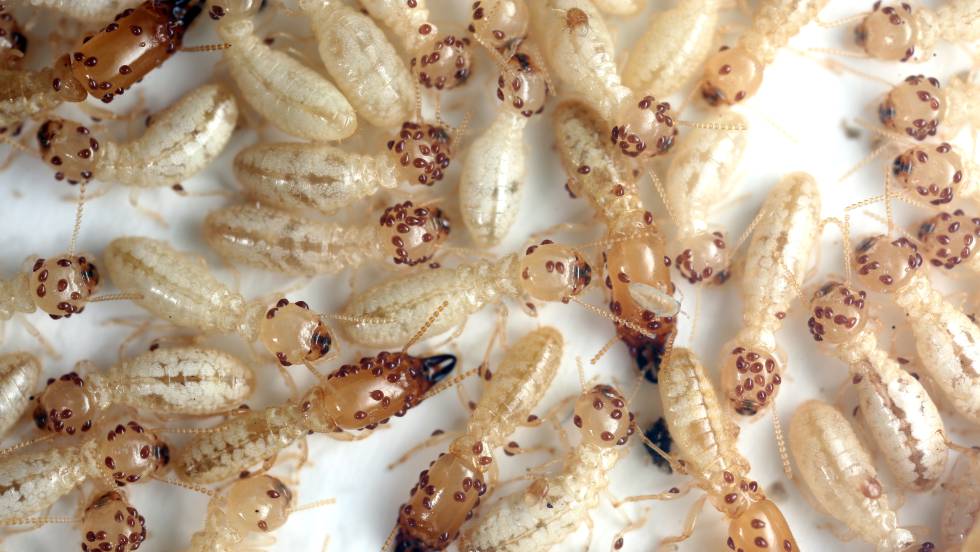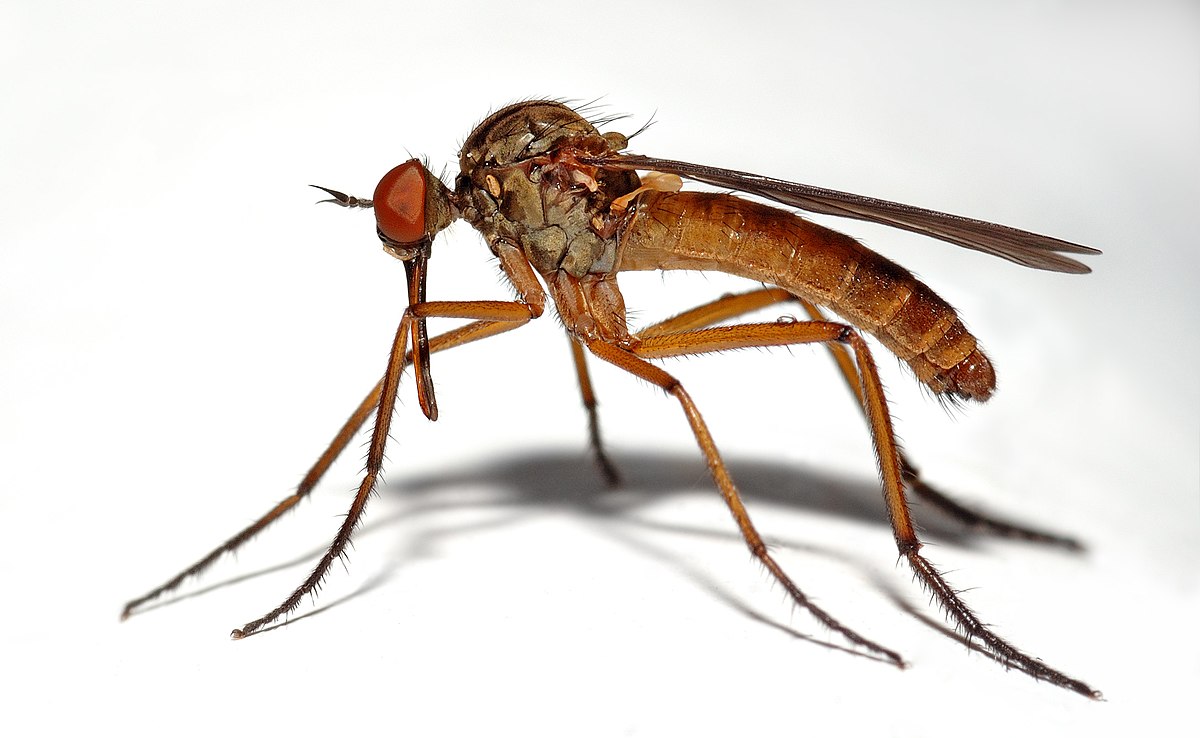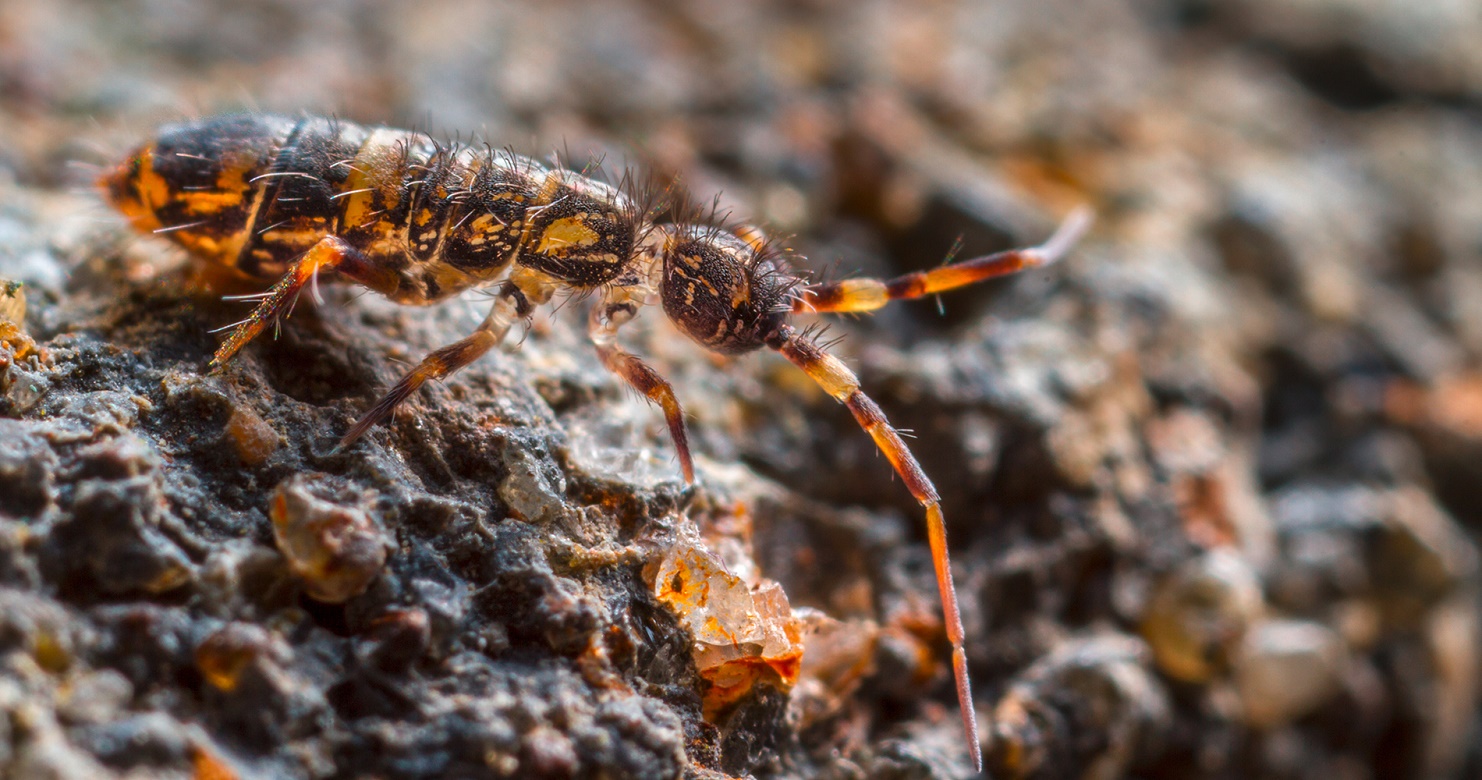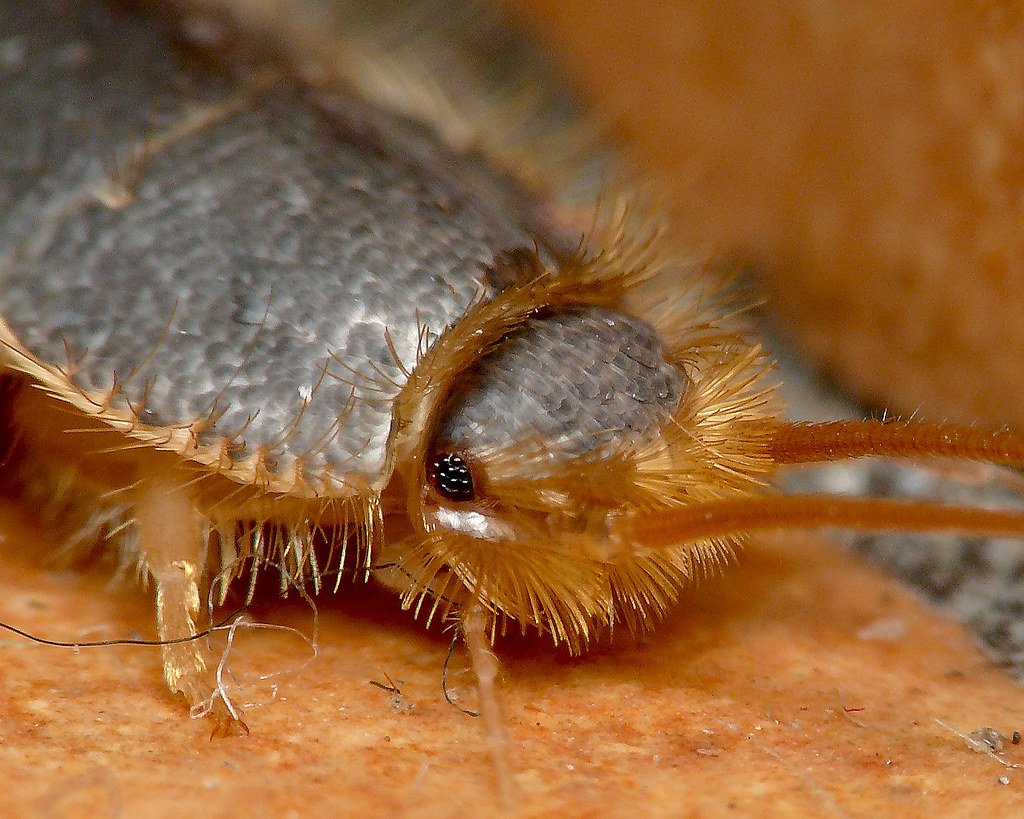When referring to the largest animals on the planet, it is common to point to the well-known insects, some are showy like butterflies and ladybugs, and others are even risky like flies and mosquitoes. But if you want to know more about it, keep reading this article on the Types of Insects and their characteristics that will be very useful for you.

Types of Insects According to their Morphology
Insects are a group of arthropods that have a hard external shell made of a material called chitin, they have their own attributes that are of great interest to learn, since they are the most abundant animals on earth.
In general, they have their body divided into three parts: in the first, which is the head, there are their eyes, 2 antennae, the mouthpieces and the brain; in the second, which corresponds to the thorax, it has the wings and six legs, and a third part, which is the abdomen, where the other internal organs are located.
Of the more than a million insects discovered to date, and knowing that many of these species have managed to survive for millions of years, they are grouped into thirty types of orders according to their morphological characteristics, that is, their physical appearance, of which the The main ones are detailed below:
Odonata (Order Odonata)
In this group are the flyers thanks to their four wings that cannot bend, in turn, they have four legs to catch what they will eat, large eyes to visualize independently of each other in the form of a mosaic and it is said that they have an incomplete shape . They are found all over the world, but especially in the rivers and streams of the European continent.
In this species are:
- Damselflies (suborder Zygoptera)
- Dragonflies (infraorder Anisoptera)
In the former, the distinction between male and female is given by their metallic blue color for the former and reddish brown for the latter, their mating ritual is performed by flying. They feed mainly on other insects such as flies, mosquitoes, bees, wasps and butterflies, among others.
While the latter have huge, multifaceted eyes, their horizontal hindwings are broader and have a different vein than the former. They feed on mosquito larvae, other aquatic insects, worms, and small aquatic vertebrates such as tadpoles and small fish, generally pursuing their prey in flight.
Orthoptera (Orthoptera Order)
Their mostly cylindrical bodies are green or brown, they live mainly in tropical areas, but they also inhabit deserts, jungles and other areas, especially in South America, South Asia and Europe.
Some have simple vision while others have compound vision, their ridged antennae can vary from long to short. They have two pairs of straight wings superimposed on the thorax, where the anterior part or tegmina is distinguished by being longer and narrower than the hind wings. In addition, their elongated legs allow them to jump.
They are quickly identified because most of this order emit a particular sound called stridulation, especially during the warm seasons of the year, however, some others depend on the reception of sound in the sensory hairs of the head, and on an auditory organ called the organ. of Johnston, located in the antenna.
Their life cycle can last a year, their reproduction is sexual, they are oviparous with a development that takes place in three phases, namely: egg, nymph and adult. Although most have terrestrial habitats, some are aquatic, most feed on plants while others are omnivores, that is, they also feed on prey.
Orthoptera include the following:
- Grasshopper
- Crickets
- lobsters
- grasshoppers
- charates
Termites (Order Isoptera)
This type of insects, also called termites, can measure between 2,5 and 18 mm, have soft bodies, with chewing mouths and short antennae. They go through a complete transformation process that includes the pupal stage. Most live in South America, Africa and Australia, especially in the tropics and savannahs, where they form colonies of more than a million termites, which are made up mainly of the queen and the three castes of workers, soldiers and reproducers.
Some isoptera eat wood or plants, but others eat fungi that grow underground, many are considered destructive pests of furniture, trees and wooden buildings. They are characterized by their great quantity and diversity in African, South American and Australian areas, especially in the tropics. Among the best known are the following:
- Wet wood termite (Kalotermes flavicollis)
- Canarian drywood termite (Cryptotermes brevis)
- Chilean termite (Noetermes chilensis)
Hemiptera (Order Hemiptera)
They show a mouth that allows him to puncture and suck liquids. They have an incomplete transformation that does not include the chrysalis, in addition the antennae are somewhat long compared to the size of the insect, which can be terrestrial or aquatic. They are generally herbivorous but also eat other insects and suck the blood of people and animals, making them vectors of disease.
They are characterized by having a flattened body with colors in shades of red and black. The shape of the head is very variable and is always horizontal. They have large visual organs plus two or three ocelli in some cases, in addition to having their sensors segmented into five parts.
As for the legs, they are not very visible, except in predators that are thick; in these cases, the femur is toothed and the tibia closes against it to trap its food. Many of these insects produce foul-smelling secretions.
They are types of herbivorous insects, a condition that makes them harmful for agriculture, since the plants are weakened by affecting the chlorophyll with their toxins and in some cases they can be vectors of viral conditions.
- Cicadas, Mealybugs and Aphids (Homoptera)
- beaked bug (triatoma infestans)
- Shield bug (Carpocoris fuscispinus)
Lepidoptera (Order Lepidoptera)
These are other types of insects with four wings that, along with the rest of the body, are covered with flat scales, which are modified fungi. They have a complete transformation, that is, they are holometabolous, passing through the phases of egg, nymph, chrysalis and adult. Atlas butterflies inhabit the tropical forests of Asia, and the silk from their large larvae is highly prized.
Many species of butterflies and moths tend to take cover, and use their physical peculiarities to hide from any enemy, simulating leaves, branches and the bark of bushes. In both groups, there are species with ocelli on the wings that mimic the eyes and, by mimicking the possible location of the head, they confuse the predators that lead their attack in this area, thus being less vulnerable.
Some of its species are pests of crops and moths, damaging wool, fur and feathers. There are also useful species such as the silkworm (Bombix mori), the threads of this fabric are extracted from its wrapper.
- Atlas butterfly (attacus atlas)
- emperor butterfly (Thysania agrippina)
- Skull sphinx moth (acherontia atropos)
Beetles (Order Coleoptera)
The shape and size of the beetles is somewhat different from each other, almost all of them have an armored body, their exoskeletons are hard. Another characteristic is its strong mouth appendages for biting and chewing. There are those who eat plants and hunters who catch small animals such as fish and other insects.
Among those grouped in this classification are:
- Flying Deer (Lucanus cervus)
- Ladybugs (Coccinellidae)
Ladybugs have beautiful bright colors, some are red or yellow with black spots, and there are some black but with red or yellow spots, attributes that give them special protection from birds that generally don't mess with them because they have a bad taste. These little animals are useful because they eat aphids and other insects that destroy many of the plants for human consumption.
Diptera (Order Diptera)
Unlike other insects, those of this group have only 2 wings, but six legs like the rest. They have organs called halteres o rockers, which are not used for flight, but for balance as they fly through all terrestrial habitats.
Those of this species have round, oval, triangular, elongated heads, among other shapes, which include the antennae, a maximum of 3 ocelli, the sucking or biting-sucking mouthparts, and the compound eyes that they can occupy in many cases. almost all this part of the body.
They are holometabolous insects with complete metamorphosis that normally includes four stages: egg, larva, pupa and adult. The number of eggs per clutch can vary from a few to thousands. As for their diet, most feed on decomposing matter, while a minority are carnivores and herbivores.
Of the best known Diptera, the following are mentioned:
- Tiger mosquito (Aedes albopicus)
- Tsetse fly (genus Glossina)
Flies are considered dangerous because of the microbes they carry from one place to another, since they perceive the taste through their legs every time they land on rotten food or through the juice they secrete from their stomach. Another characteristic feature is that they can smell things with their 2 antennae.
For their part, mosquitoes are also risky due to their bites and the spread of diseases such as malaria and dengue.
Hymenoptera (Order Hymenoptera)
They have mouthparts that lick or suck liquid food, as well as two pairs of membranous wings. Most are harmless, but in some cases wasps and bees sting with their stingers that serve to inject venom for defensive purposes when they are attacked.
Among the different types of insects that exist, those of this order have ants and bees as their greatest representation because they are known for their high level of organization as they all work together in the colony commanded by a queen.
There are variations in what they eat, for example, bees and wasps feed on the nectar of flowers and pollen, there are also carnivorous, herbivorous, omnivorous insects and even some that feed on the body fluids of other species.
Some other species are:
- Asian bee (Vespa velutina)
- potter wasps (Eumeninae)
- pollen wasps (masarinae)
Bees are of great importance because the honey they produce is used for human consumption and their ability to pollinate various crops also gives them enormous importance, as they are capable of multiplying the production of many economically important crops.
On the other hand, there are other insects that destroy cultivated plants, among them the leaf-cutter ants and other ants that also eat seeds, roots and leaves. Likewise, there are also calcids, which are internal parasitic wasps of various species of pest insects, such as aphids and mealy bugs, which cause economic damage to crops such as citrus and coffee.
Types of Wingless Insects
The wingless do not have wings nor did they go through a transforming process, since the young, from birth, retain the appearance of when they reach adulthood. They walk on the ground, they are small in size and have a mouth suitable for chewing or biting, among the most striking are ants and termites.
They are classified in:
springtails: They have a spring-like jumping organ in their abdomen, which allows them to jump to the ground or into the water. They sometimes invade pools and ponds and can live in snow.
- snow fleas
proturs: Very small insects. Without antennae, with simple eyes and a grinding nozzle. They do not have metamorphosis. They live in humid environments, in caves and under stones.
- aceretomon
Dipluri: They lack eyes. They have mobile and articulated antennas. They are small in size. Abdomen with 11 segments ending in tweezers. They live under stones and leaves.
- Catajapix (7mm)
- Green flea (5mm)
Thysanides: Insects with chewing mouthparts. They feed on plants and also damage clothes, books, cookies, among other things. They have compound eyes, long jointed antennae and three filaments at the abdominal end, and their body is covered with small silvery scales.
- Silverfish or Lepisma
- lingerie
- thermobes
- fire bugs
- Forbycines or moth fish
Final Considerations
It is important to point out that, generally, it is usual to talk about the defense mechanisms of some insects against other animals, which they achieve due to their appearance that makes them appear dangerous or that they have a bad taste, such is the case of birds that do not bother the birds. butterflies that look like the monarch butterfly that taste bad. Another example is that, due to the similarity of the bee with a bumblebee, the birds or toads that have been stung by the latter prefer not to be interested in this butterfly.
Likewise, thanks to the colors that insects have, it allows them to blend in with their environment and thus escape from danger, this happens with those that are shaped like leaves or twigs, among other cases worthy of what is called mimicry.
We hope that all the information provided through this article on the Types of Insects and their Characteristics has been to your liking. If you want to know other interesting topics, you can read about:
